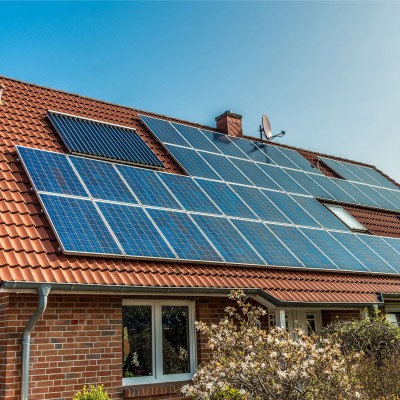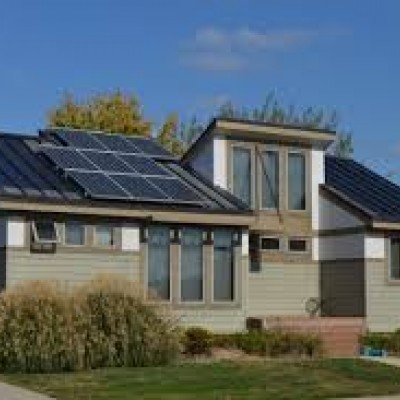Massachusetts Community Solar Industry at Risk Due to Regulatory Changes
More and more people are interested in ‘going solar,’ but most people cannot put solar panels on their roof. Imagine this: you want to go solar, get an on-site assessment, and find out that your roof is not adequate due to tree shading, direction of the roof, or age of the roof. Over the last couple of years, community solar has emerged as a solution to this problem. Community solar involves building off-site solar arrays that produce enough energy for dozens or even hundreds of homes. Households and small businesses within ~30 miles of the array can secure a share and receive a credit on their utility bill for the energy it produces.
Community solar projects are democratizing access to solar by allowing customers to see solar savings on their bill — not just the people who have an ideal roof. A series of studies have found that only 22 percent to 27 percent of residential buildings are suitable for hosting solar panels. For the remaining 73-78 percent of buildings unsuitable for onsite solar, community solar broadens access to a local, renewable energy source. Community solar takes advantage of economies of scale and optimal site locations to generate more energy for each dollar invested in solar.
While Massachusetts has put in place legislation that allows community solar to exist, recent legislation put the community solar industry at risk in three ways:
First, while small on-site residential systems don’t count toward the state’s net metering caps, community solar is limited by caps on net-metered solar installations. Legislation passed in April this year issued an emergency cap increase, but we’ve already hit the caps again, meaning new community solar installations have stalled.
Second, recent legislation also cut the net metering credit rate, or value the utilities place on energy produced by community solar projects, by 40 percent. Residential and municipal projects were exempt from the 40 percent cut, but community solar was directly impacted.
Third, the Solar Renewable Energy Credit (SREC) incentive framework reached its limit earlier this year. SREC programs allow solar owners to sell credits to electricity suppliers who need to meet requirements for renewable energy production. The Department of Energy Resources (DOER) issued an extension for some, smaller projects as a short-term patch, but has been slow to implement the next SREC program.
Given community solar’s advantages of accessibility and affordability for consumers, it is unclear why community solar stands to lose under the current political framework. Community solar can do away with many of the hassles of rooftop solar. Relay Power, a Boston-based community solar company, has heard time and again that their customers were surprised when they learned about the benefits of community solar. One Relay Power community solar participant, Emily Hurley, was excited that she was able to go solar without the trouble of installing rooftop panels: “Our house is over 100 years old so the rafters can’t support the weight of panels, but we were able to go community solar.”
Despite her roof being unsuitable for panels, Emily can still access $5,000+ in savings on her energy bills by participating in community solar. Emily noted that, “if more people knew about it, more people would use it.”
For as much progress as the solar industry has made in recent years, residential solar remains the option for the fortunate, with the remainder of households unable to access it. At a time when Massachusetts is grappling with balancing ratepayer affordability and accessibility, all while staying on track to meet legally mandated emissions reductions, community solar is an ideal solution.
"Community Shared Solar is the democratization of solar for those folks that did not hit the ideal solar house lottery,” said Pat Cloney, the previous CEO of the Massachusetts Clean Energy Center. “It seems fair that not just government and commercial organizations or lucky residents should have access to solar. Anyone and everyone that wants it should have access to it." Policymakers need to realize the benefits of community solar, rather than just sticking with incentives for residential solar.
While it seems increasingly unlikely that the legislature will uphold their promise of a truly comprehensive energy bill, DOER has the opportunity to take urgent action to design and implement a new program so that solar investments will continue without disruption. In order to ensure community solar has equal opportunity to finance projects, DOER must put a clear framework in place to replace the SREC-II program. Regardless of what framework DOER chooses (block grant, SREC-III, etc.), it is most critical for action to be swift and for the underlying economics to support community solar as equivalent to rooftop solar.
Climate Action Business Association, a Boston-based business group, views development of the next SREC program to be the first and biggest priority for the community solar industry. So long as policymakers are slow to act, community solar projects are at risk of being put on hold. We urge DOER to provide economic certainty and support for community solar that acknowledges the industry’s economic and societal benefits.
By lowering the barriers to entry, community solar presents a transformative way to broaden the market for solar power. We should invite community members to come together to build our clean energy future, not isolate them from accessibility.
This article originally appeared at Renewable Energy World.


